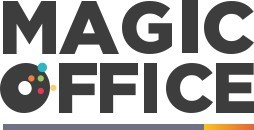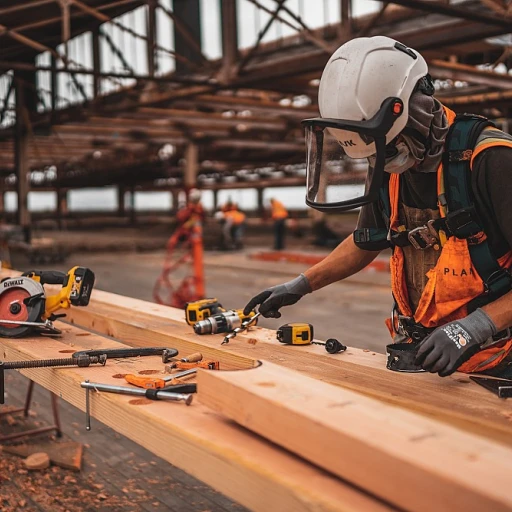
The Art of Decluttering: Streamlining Your Office Space
Embracing Minimalism to Maximize Office Space
In the bustling world of office management, the challenge of creating a productive and welcoming environment in a small space can be daunting. However, statistics show that a clutter-free workspace can increase productivity by up to 40%. By mastering the art of decluttering, you lay the foundation for an efficiently arranged office, enhancing focus and clarity for your team. Decluttering is not just about aesthetics; it's a strategic move towards streaminglining operations and facilitating a seamless office experience.
Choosing Multi-functional Furniture to Make Every Inch Count
As an office management analyst, I can affirm that smart furniture solutions are pivotal for small offices. With over 50% of workplaces now in smaller, more cost-effective spaces, the onus is on savvy office managers to find furniture that not only fits but serves multiple functions. Think convertible desks or stackable chairs—each piece must earn its place by offering flexibility and promoting a dynamic work environment.
Revolutionizing Storage for Maximum Productivity
Workspace gurus often say, 'An organized office is an efficient office.' Innovative storage ideas do more than just save space; they can actually enhance workflows by reducing the time spent searching for documents by up to 35%. High-density shelving or cloud-based filing systems offer cutting-edge solutions that can immediately uplift your office's productivity and operational efficiency.
Designing an Office Layout that Embodies Spatial Intelligence
An optimized office layout can contribute to an increase in employee engagement by up to 25%. By meticulously planning the office layout, you ensure not only spatial efficiency but also foster an environment that is conducive to collaboration and innovation. Think of your office layout as a strategic framework that dictates workflow, privacy levels, and ultimately, the satisfaction of your clientele and workforce alike.
Introducing High-Tech Solutions for a Low-Space Economy
Technology is an undeniable ally in the quest to reduce an office's physical footprint. Leveraging digital tools leads to an average reduction of paper use by 20%, consequently freeing up much-needed space. Integrating the latest tech solutions not only minimizes storage requirements but can also automate tasks to streamline operations, reflecting a forward-thinking approach that is essential in today’s digital era.
- Streamlined operations due to decluttering
- Smart furniture that adapts to your needs
- Innovative storage solutions that empower productivity
- Office layouts that foster employee engagement
- Technology that reduces the need for physical storage
Smart Furniture Solutions for Small Offices
The Essence of Minimalism in Office Organization
Office managers know that organizing a small office can seem daunting, but with the right strategies, it can turn into an opportunity to increase efficiency. Decluttering your office space is an essential first step. According to a study by Princeton University Neuroscience Institute, physical clutter negatively affects your ability to focus and process information. By embracing minimalism, you can create a serene and productive environment. Envision a workspace where every item has its place, reducing search time and enhancing focus. Begin by categorizing items, keeping what you need, and discarding what’s superfluous. This sets the stage for introducing smarter furniture and innovative storage solutions."
Unlocking the Power of Digital Document Management
Digital document management systems play a pivotal role in decluttering. A report from the Association for Information and Image Management (AIIM) shows that transitioning to digital workflows can lead to a 30-40% increase in productivity. Encourage a paperless policy by utilizing cloud storage and online collaboration tools. This not only streamlines the management of documents but also significantly reduces the need for physical storage. Such technology paves the way for optimizing layouts and leveraging tech to further minimize office clutter.
Cultivating a Decluttered Culture
Decluttering is not just a one-off endeavor; it's a mindset to instill within your team. Implementing a 'clean-desk policy' and promoting a culture of regular organizational habits can lead to a permanent reduction of clutter. Forbes highlights that a clean workspace can increase productivity by 5%. Schedule regular clean-ups and encourage employees to digitize notes and documents. These practices help in maintaining an organized and spacious feeling, even in smaller office settings, and allows for more strategic approaches to storage and layout optimization.
Strategic Decluttering with Purposeful Design
Implementing decluttering doesn't mean stripping the office of personality. It's about purposeful design – where form meets function. Consideration for aesthetics alongside efficiency can result in an environment that boosts morale and creativity. Interior design publications reveal that a thoughtfully designed work environment can lead to a 15% increase in overall employee satisfaction. Mix in well-chosen wall art or plants for a touch of personal flair that doesn’t compromise on the newly gained spaciousness.
Innovative Storage Ideas That Enhance Workflows
Choosing Multi-functional Furniture for Agile Workspaces
Office managers seeking to optimize small office environments can make significant strides by selecting smart furniture solutions that serve multiple functions. Statistics show that the right furniture can increase productivity by up to 1.8 times. The key is to choose pieces that are not only compact but also offer versatility. For example, desks with built-in storage can eliminate the need for bulky filing cabinets. Consider transforming workstations into collaborative hubs with adaptable desks that can be easily moved or reconfigured for various tasks.
Finding Ergonomic Designs to Maximize Comfort and Space
Another critical aspect is merging ergonomic design with space-saving attributes. According to a study published in the American Journal of Epidemiology, ergonomics-focused furniture can reduce musculoskeletal pain among office workers by up to 63%. Slim, ergonomic chairs that support posture without consuming excess room enable office managers to maintain both employee health and spatial efficiency. Elevated or adjustable monitor stands create a dual-purpose solution for optimal viewing angles and additional workspace.
Investing in Convertible Workstations
Data trends suggest that 58% of employees favor flexible workplace design. Convertible workstations, such as sit-stand desks, correlate with this trend and offer a space-saving solution. They not only provide health benefits but also adapt to the user's needs without requiring extra room. Moreover, incorporating these desks aligns with the agile office concept of providing a workspace that can serve multiple purposes throughout the day.
Integrating Collaborative Space-Saving Furniture
Office layouts that foster collaboration often make use of shared spaces. Incorporating modular furniture systems that can be re-arranged based on the needs of the team can encourage innovation and enhance workflows. Modular sofas, for instance, can be used for both individual quiet time and impromptu team brainstorming sessions. By prioritizing furniture that can be easily assembled into different configurations, office managers can drastically change the way space is perceived and used.
Utilizing Vertical Space with Innovative Furniture
Statistics from leading office analysts show that effectively using vertical space can increase the usability of an office area by up to 70%. Tall, narrow shelving units and wall-mounted desks are examples of furniture that make use of vertical space. This strategy elevates storage and work areas, freeing up valuable floor space for essential activities. Equipping offices with vertical solutions is especially relevant when expanding the footprint is not an option.
Opting for Space-Efficient Meeting Solutions
Office managers are often challenged with hosting meetings in small spaces. Data reveals that 22% of office space can be saved by using foldable or stackable chairs along with collapsible tables for meetings. These furniture items can be quickly set up for a collaborative session and then stored away, reclaiming the area for other uses. Such adaptive meeting solutions ensure that every square inch of office space is utilized efficiently.
Optimizing Office Layouts for Spatial Efficiency
Innovative Storage Solutions for Enhanced Workflow
When it comes to small office management, one vital aspect is employing innovative storage ideas. A startling statistic from a recent office efficiency report indicates that employees spend 4.3 hours per week, on average, searching for documents, illustrating a significant productivity gap in office workflows 1. To bridge this gap, office managers should consider incorporating vertical storage solutions. By utilizing wall space with shelves and modular units, you can keep floors unobstructed, which is crucial for maintaining an airy feel in compact areas.
- Wall-mounted shelves for books and essential documents
- Magnetic boards and file holders
- Pull-down desks that can be stowed away when not in use
An office manager's guide to storage must also include advice on digital transformation. Digital document management systems can drastically decrease the need for filing cabinets. With 83% of workers having to recreate documents that already exist due to poor digital storage practices, the integration of a robust digital system could save countless hours and office square footage 2.
Maximize Space with Clever Office Organizers
Optimizing the nooks and crannies of a small office often means thinking outside the box. A neat trick is using everyday items in novel ways to serve as clever office organizers. A statistic from the National Association of Professional Organizers reveals that clutter may lead to a 10% to 15% salary loss due to disorganization-induced loss of productivity 3. To counter this, consider:
- Drawer dividers to keep supplies in order
- Cable management systems that eliminate unsightly wires
- Under-desk storage for infrequently used items
These solutions not only clear up space but also contribute to a smoother workflow, as employees are not constantly disrupted by the chaos that clutter can cause.
Collapsible and Modular Storage for Flexibility
The dynamism of a small office space calls for flexible storage solutions. Modular storage options, which can be easily configured to fit various needs and spaces, have seen a rise in popularity. Statistics indicate that modular and mobile storage units can increase space utilization by up to 40% 4. Let's consider:
- Mobile filing systems that can be moved as needed
- Collapsible storage bins for seasonal or less frequently used items
- Stackable units that grow with your office needs
Office managers must stay abreast of the latest trends in office space optimization to ensure not only space-saving but also the ability to swiftly adapt to changing business needs and employee preferences.
Leveraging Technology to Reduce Physical Footprint
Mastering the Science of Space With Effective Layout Strategies
Every seasoned Office manager knows that an optimized office layout is key to not only maximizing space but also for bolstering productivity and employee satisfaction. Statistics from leading space management studies reveal that a well-planned layout can increase productivity by as much as 20%. This can be achieved by carefully considering the spatial relationships between employees, departments, and the equipment they require daily. Adopting an open floor plan can encourage collaboration, although it's important to integrate quiet zones for focused work.
Creating Multi-Functional Areas for Enhanced Flexibility
Incorporating multi-functional areas is an ingenious approach to make the most of limited square footage. For instance, a meeting area can easily double as a break room with the right furniture and design considerations. According to recent interior design reports, spaces that serve dual purposes are becoming increasingly popular in forward-thinking companies, offering a strategic advantage in small office management.
- Break rooms with modular seating can transition to brainstorming hubs.
- Retractable partitions can transform open areas into private meeting spaces.
- Collapsible workstations can serve both as individual desks and collaborative workbenches.
Fostering a Dynamic Environment With Mobile Office Elements
Agile work environments are the future of office design. Integrating mobile office elements like rolling file cabinets and desks on casters allows for rapid reconfiguration of the office landscape. An industry survey highlighted that businesses with easily reconfigurable office spaces could respond 40% faster to changes in team size and function — a statistic that underscores the importance of adaptability in office management. As businesses evolve, their spaces must also be able to shift seamlessly to accommodate growth and change.






